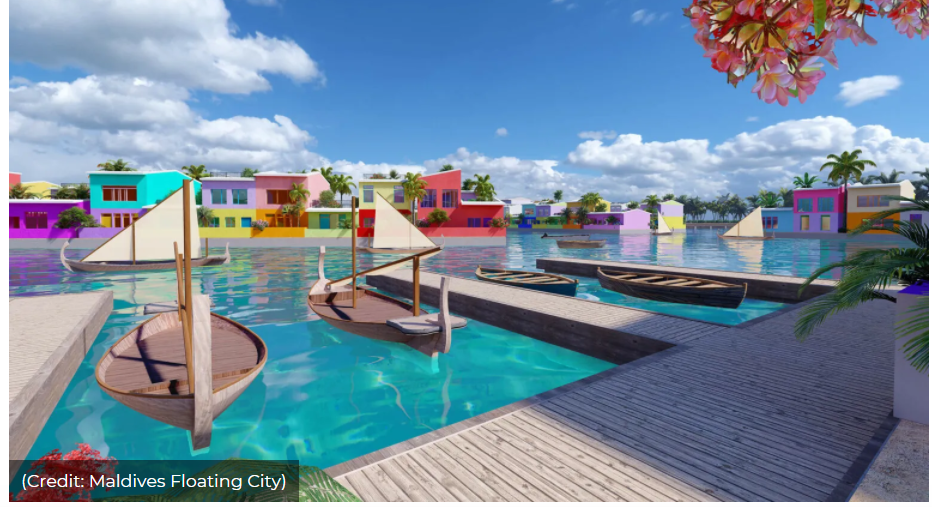To mitigate the effects of climate change and rising sea levels, the atoll nation of Maldives is building the first-of-its kind floating island city. Designed by Dutch Docklands, the development will feature thousands of waterfront residences and services floating along a flexible, functional grid across a 200-hectare lagoon. Construction is due to start in 2022 and completed over the next five years.
The Maldives is one of 48 developing nations most threatened by a global climate emergency participating in the Climate Vulnerable Forum (CVF), which was founded in 2009. The CVF is composed of members from Africa, Asia, the Caribbean, Latin America and the Pacific, representing some 1.2 billion people worldwide.
The United Nations has warned that oceans are under threat like never before and emphasized the increasing risk of rising sea levels. Around 40% of the global population live within 100 kilometers of the coast. Atoll nations, like the Maldives, Kiribati, Tuvalu and others, are even more at risk than other island-based countries. So-called king tides, which can wash over parts of habitable land, and the storms that drive them are getting higher and more intense due to climate change.
Dutch Docklands worked with urban planning and architecture firm Waterstudio, which is developing a floating village in the Netherlands, to create a water-based urban grid built to evolve with the changing needs of the country. The hexagon-shaped floating segments are, in part, modeled on the distinctive geometry of local coral. These are connected to a ring of barrier islands, which act as breakers below the water, thereby lessening the impact of lagoon waves and stabilizing structures on the surface. The floating island city does not require any land reclamation and therefore has minimal impact on the local coral reefs.
Renewable energy will power the city through a smart grid and homes will be priced from $250,000 in a bid to attract a wide range of buyers, including local fishermen.
Article credit: environmentalleader
